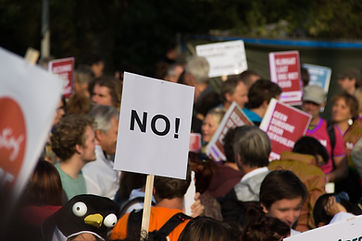
Revolution to Early Republic (1754 - 1800)

Broadway musicals during/about this era, most notably Hamilton, have received a large amount of press because of the statements made throughout the show. Lin-Manuel’s deliberate choice of the show itself and to stage it with a diverse cast have evolved into a political statement of unity and equality in a post-racial society. However, American society is very far from post-racial, so the show works as a glimpse into an America of the future through the lens of its past. Through the racial makeup of its cast, Hamilton is able to communicate issues in society during and after the American Revolution and continuing into today. During Broadway's infancy, shows didn’t challenge the ideas of society--they conformed to the racism, discrimination, and norms of the time, for the very purpose of entertaining people. Shows during this era were simply for the purpose of making white men laugh, not communicating a message or trying to make a point. Many people saw theater as unpatriotic because of the fact that it was rather meaningless entertainment and didn’t outline the ideals/rights of American people. Today, Broadway writers, producers, and actors have made up for the early lack of theater which worked to question social issues through numerous contemporary shows that bring meaning and life to many historic events. During the colonial era, there was a large emphasis on self-government and white superiority because shows were for the eyes of white men. Today, these themes are challenged through Hamilton’s diverse cast which portrays the American Revolution in a more modern way. Although entertainment during colonial times was based upon making people laugh, the issues/events going on during this time set the stage for musicals/entertainment of today to represent how society has both changed and hasn’t changed.
Theaters at The Time
A theater had been established in the city; however, it remained closed during the duration of the American Revolution and the French and Indian War. In 1798 it reopened and a new theater called Park Theater was built and could seat up to 2,000 people.
Today theatre is seen as a fun, entertaining, and educational art form and an expression of freedom of speech. Many members of the Continental Congress saw theatre as unpatriotic and unacceptable. This lead one of their first acts to ban theatre and an idea that this was necessary to do so. In December of 1775, people attacked this ban from the stage itself.
“While these sad Causes and Set-times of Humiliation do continue, public Stage-Plays shall cease and be forborne. Instead of which, are recommended to the People of this Land, the profitable and seasonable Considerations of Repentance, Reconciliation and Peace with God, which probably may produce outward Peace and Prosperity, and bring again Times of Joy and Gladness to these Nations.”
The first religious ban on theatre was ineffective and a second act was passed in the early 1700s which was more forceful.

An image by William Hogarth in 1733 of a laughing audience which was meant to depict 18th-century theater life, which was much different than it is today.
Hamilton: The Musical
Lin Manuel Miranda
Lin Manuel Miranda’s Hamilton is a musical sensation that portrays the story of the American Revolution. The play takes many liberties, including the addition of some characters and a different spin on historical events; but, there remains a large emphasis on the general opinion that America is superior to all other countries. Miranda also emphasizes how the Constitution was designed to protect the civil liberties that Americans fought for during the revolution, including maintaining a governmental system of checks and balances. . Hamilton portrays the American spirit and how a small group of farmers came together to defeat the most powerful nation on the planet.
Hamilton addresses the issue that was British taxation and exploitation of the colonists; however, it forgets to represent the fact that the colonists were partially responsible for the debt that the British faced. Lin Manuel Miranda’s pieces help portray colonists’ response to the end of salutary neglect; however, throughout the show, the idea that the colonists were completely innocent was made quite obvious. The voice of the British is often left out, and if it is put in, it is portrayed in a harsh way. This is not very surprising given Hamilton’s Federalist nature and push for federal power. For example, even though the British might have handled things poorly and taken some of their actions too far, like the Quartering Act, the colonists also had some responsibility to help pay back a war. Overall, Hamilton, The Musical makes the US look like they were being completely exploited by the British, which is partially true; however, they were deserving of some of the taxes due to the fact that the British helped during the French and Indian War.
Lin Manuel Miranda talks about the difference between the reactions to the musical in America and in England.
“I will send a fully armed battalion to remind you of my love! Da da da dat da dat da da da da ya da”-King George, You’ll Be Back
“Your debts are paid cuz you don’t pay for labor, We plant seeds in the South. We create.” Yeah, keep ranting. We know who’s really doing the planting”- Alexander Hamilton, Cabinet Battle #1
“Everyone shall sit under their own vine and fig tree, And no one shall make them afraid.”- George Washington, One Last Time
"I am not throwing away my shot
I am not throwing away my shot
Hey yo, I’m just like my country
I’m young, scrappy, and hungry
And I’m not throwing away my shot" - Hamilton, My Shot


Hamilton v.Trump
Political Cartoon
This political cartoon shows the impact that the musical has on society today and the fact that it increased awareness of and respect for the American Revolution to occur. This musical helped outline the American ideals that people fought for in the past and made it clear that Americans should still have these rights today.